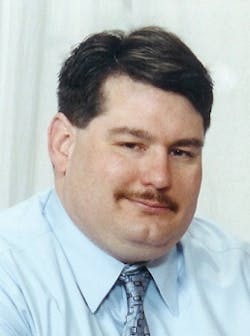Are You Measuring Quality Of Service?
Competent GSE maintenance managers are proficient at work shift scheduling, providing technician coverage, dealing with workload and managing shop workflow. Shop managers typically establish solid performance metrics and key performance indicators (KPIs) to measure areas such as productivity and returns or to track equipment status.
However, frequently shop managers fail to measure “quality of service.”
When I talk “quality of service” with colleagues in the airline and transportation industry, they usually have a definition based on their own perspectives. “We give great service” is a mantra easily delivered by most maintenance managers. But they are often stumped when asked: “How do you measure quality of service?” or “How do your customers define quality service?”
EXPECTATIONS
Without an established measurement, “quality of service” is in the eyes of the beholder. Customers have expectations for their service experience. They then compare their actual experience with their expectations. The result “establishes” their perception of the service actually being offered. (As an example, we can have a “very good” service experience at a fast food restaurant where we wait on ourselves and bus our own tables. We can have a “pretty poor” service experience at a sit-down restaurant where we are waited upon and someone else cleans up after us. Expectations impact our perception of quality of service.)
One example of a quality of service measure in our industry is Equipment Repair Turnaround Time (TAT). Many airlines and aviation industry service providers track TAT. Typically, TAT is a measure of the time between when an asset is taken out of service for a PM or repair and when it is returned to service. Most of us have been in a situation where we’ve received a report, generated at corporate headquarters, that says we’re less than successful in providing service. The report shows the service “benchmark” established in hours or days. Then, it shows our performance at days or weeks, far short of great service. But, we know we turn a PM and most repairs in just a few hours.
MEASUREMENTS
At our company, we touch nearly 14,000 assets each month. From the time an asset hits our shop door to the time we return that asset to the ramp, we rarely have a piece of equipment in our shop for days or weeks. So how could there be a perception that our service is lacking? The answer depends both on how the TAT is measured and by whom.
Measuring turnaround time can include many variables. As a service provider, we need to understand how each customer measures TAT. Is it measured from when the asset comes out of service to when it is returned to service (a physical assessment)? Or, is it measured from when the work order is generated to when the work order is closed (a computer-based assessment)?
Recently, a major airline initiated a measurement of TAT that started when a work order was created. The asset, whether in service or not, was considered out-of-service and was on the clock when the work order was created. If a service provider created a work order for a PM that included deferred maintenance repairs that were to be done in the next month, that repair was on the clock. The first Equipment Repair Turnaround Time Assessment following that new approach made a service provider’s TAT look very poor. In the eyes of the customer, the service provider’s quality of service had gone down significantly.
Shop managers must understand how each customer defines quality of service. Turnaround time is just one measure of quality of service. They should also define and establish qualitative measurements for quality of service, which are as important as KPIs for productivity and returns.
About the Author: Will Ryder is Global Aviation Services Director of Maintenance for the West Region. His experience includes 24 years in fleet maintenance and GSE support leadership. Global Aviation Services provides GSE and fleet maintenance service to the aviation industry and has over 180 technicians serving more than 50 airport.
